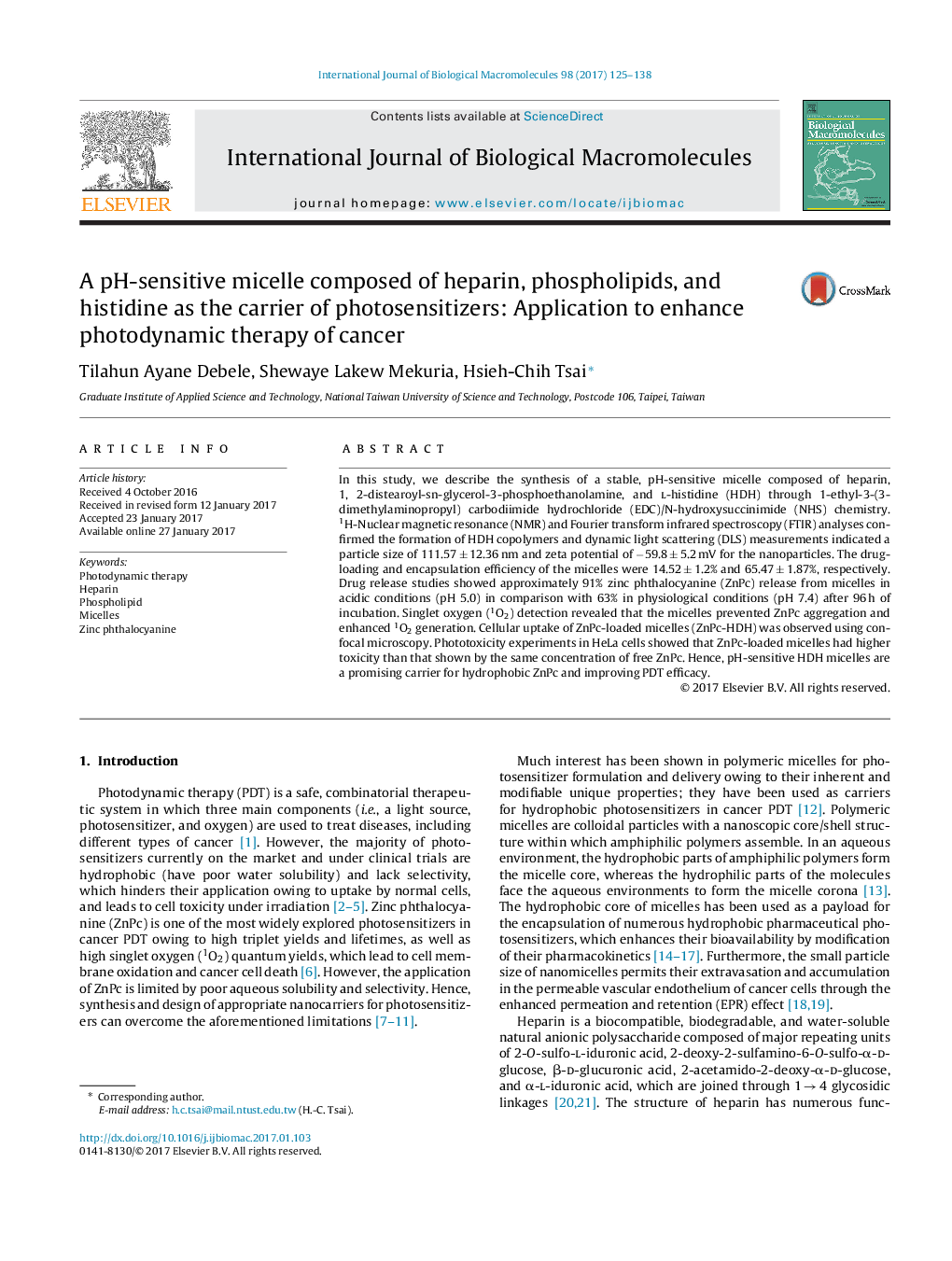| Article ID | Journal | Published Year | Pages | File Type |
|---|---|---|---|---|
| 5512258 | International Journal of Biological Macromolecules | 2017 | 14 Pages |
Abstract
In this study, we describe the synthesis of a stable, pH-sensitive micelle composed of heparin, 1, 2-distearoyl-sn-glycerol-3-phosphoethanolamine, and l-histidine (HDH) through 1-ethyl-3-(3-dimethylaminopropyl) carbodiimide hydrochloride (EDC)/N-hydroxysuccinimide (NHS) chemistry. 1H-Nuclear magnetic resonance (NMR) and Fourier transform infrared spectroscopy (FTIR) analyses confirmed the formation of HDH copolymers and dynamic light scattering (DLS) measurements indicated a particle size of 111.57 ± 12.36 nm and zeta potential of â59.8 ± 5.2 mV for the nanoparticles. The drug-loading and encapsulation efficiency of the micelles were 14.52 ± 1.2% and 65.47 ± 1.87%, respectively. Drug release studies showed approximately 91% zinc phthalocyanine (ZnPc) release from micelles in acidic conditions (pH 5.0) in comparison with 63% in physiological conditions (pH 7.4) after 96 h of incubation. Singlet oxygen (1O2) detection revealed that the micelles prevented ZnPc aggregation and enhanced 1O2 generation. Cellular uptake of ZnPc-loaded micelles (ZnPc-HDH) was observed using confocal microscopy. Phototoxicity experiments in HeLa cells showed that ZnPc-loaded micelles had higher toxicity than that shown by the same concentration of free ZnPc. Hence, pH-sensitive HDH micelles are a promising carrier for hydrophobic ZnPc and improving PDT efficacy.
Related Topics
Life Sciences
Biochemistry, Genetics and Molecular Biology
Biochemistry
Authors
Tilahun Ayane Debele, Shewaye Lakew Mekuria, Hsieh-Chih Tsai,
